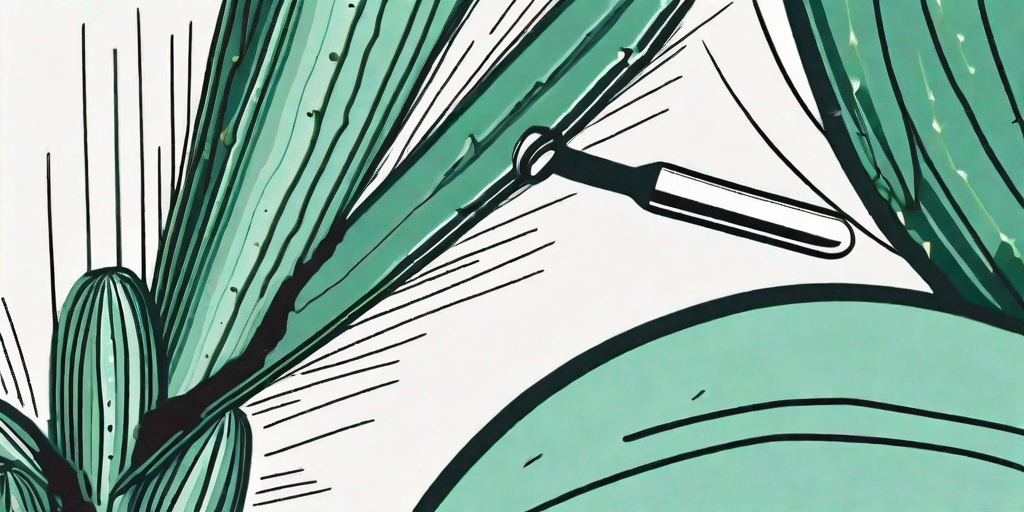
The prickly encounter with a cactus is a tale as old as time. Whether you're a seasoned hiker, a green-thumbed gardener, or an unfortunate passerby, those pesky cactus needles (or glochids, for the botanically inclined) can turn a pleasant day into a prickly predicament. But fear not, dear reader, for this guide will arm you with the knowledge to remove those spiky invaders like a pro.
Understanding Your Prickly Foe
Before we dive into the nitty-gritty of needle extraction, let's take a moment to understand our spiky adversary. Cacti, those hardy desert dwellers, are armed with two types of prickles: the larger, more visible spines and the smaller, hair-like glochids. While the spines are easier to spot and remove, it's the glochids that often cause the most trouble. These tiny barbs, barely visible to the naked eye, can embed themselves deep into your skin and cause significant discomfort.
Now, you might be wondering, "Why on earth would a plant evolve to be so prickly?" Well, in the harsh desert environment, these spines serve as a formidable defense mechanism against thirsty animals. So, the next time you find yourself on the receiving end of a cactus's prickly defense, remember: it's not personal, it's just survival.
The Art of Needle Extraction
Now that we've acquainted ourselves with our prickly foe, it's time to get down to business. The art of needle extraction is a delicate one, requiring patience, precision, and a dash of bravery. But with the right tools and techniques, you'll be a pro in no time.
Step 1: Safety First
Before you start poking and prodding at your skin, it's important to ensure your safety. This means washing your hands thoroughly to prevent infection and donning a pair of tweezers. If the needles are particularly deep, you might also want to consider wearing a pair of safety glasses to protect your eyes.
Remember, the goal here is to remove the needles, not to inflict further harm. So, take your time, breathe deeply, and proceed with caution.
Step 2: Tweezer Time
Now that you're all geared up, it's time to bring out the tweezers. Using a magnifying glass, locate the embedded needle and gently grasp it with the tweezers. Apply steady pressure and pull the needle out in the direction it entered. This will help to minimize skin damage and reduce the chance of the needle breaking.
If the needle proves stubborn, don't resort to force. Instead, try soaking the area in warm water to soften the skin and make extraction easier.
Step 3: The Tape Trick
If tweezers aren't doing the trick, or if you're dealing with a multitude of tiny glochids, it's time to bring out the big guns: duct tape. Simply apply a piece of tape to the affected area, press down firmly, and then rip it off like a band-aid. The glochids should stick to the tape and come right out.
Be warned, though: this method can be a bit painful, so it's not for the faint of heart. But when it comes to cactus needles, sometimes you have to fight fire with fire (or in this case, prickles with stickiness).
Aftercare and Prevention
Once you've successfully removed the needles, it's important to clean the area thoroughly with soap and water to prevent infection. If the area is particularly sore or swollen, applying a cold compress can help to reduce inflammation.
Of course, the best way to deal with cactus needles is to avoid them in the first place. When hiking or gardening, wear protective clothing and be mindful of your surroundings. And remember, when it comes to cacti, it's best to admire from a distance.
Frequently Asked Questions
What should I do if a needle breaks off in my skin?
If a needle breaks off in your skin, don't panic. Try to remove as much of it as you can with tweezers, and then apply a warm compress to soften the skin and draw out the rest of the needle. If you can't remove it, or if the area becomes red, swollen, or painful, seek medical attention.
Can I get an infection from a cactus needle?
While it's rare, it is possible to get an infection from a cactus needle. To reduce the risk, clean the area thoroughly after removing the needles and keep an eye out for signs of infection, such as redness, swelling, or pus.
Why does it hurt so much?
Cactus needles hurt because they're designed to. The tips of the needles are barbed, which means they hook into your skin and don't let go. This causes a small amount of damage to your skin, which your body responds to with pain.
So, the next time you find yourself in a prickly situation, remember: knowledge is power. With these tips and tricks, you'll be well-equipped to tackle any cactus encounter like a pro.















